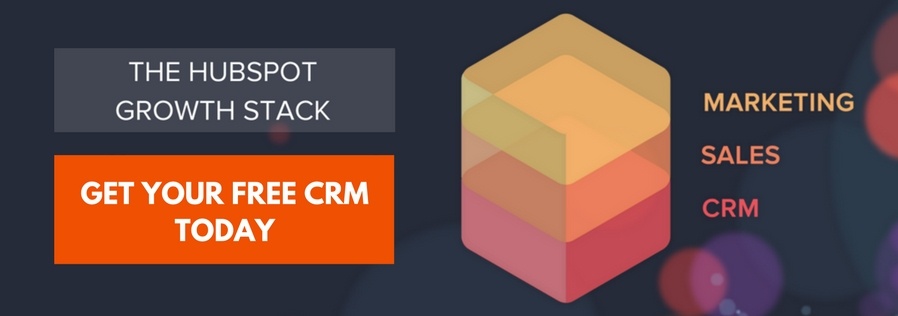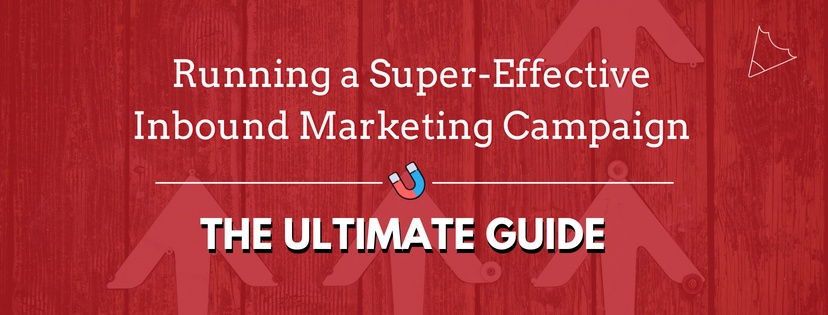
Everyone these days is talking about inbound marketing, content marketing, trust marketing, permission marketing and so on.
But have you gotten the chance to decipher these terms in detail?
If you haven’t already, don’t worry, this detailed guide has got your back.
All these terms share the same core element: Relevant content for a targeted audience.
In other words, content within context.
Those 3 words form the core essence of what we call “inbound marketing”.
But how do business owners and marketers like you implement this form of pull-marketing?
How to start?
What do you need?
What’s the first step?
These are some common questions in the mind of someone new to this arena.
But here’s where the confusion ends.
Being a part of a growing inbound marketing agency in the UAE, I’ve heard all sorts of rumours, confused statements, misquotations and ambiguous chatter about inbound marketing.
In this mega-article I’m going to completely de-construct inbound marketing and dissect every element, definition-by-definition, step-by-step to help you wrap your head completely around this topic.
If your attention span allows it, by the end of this article, you’ll look at marketing with a brand new perspective.
What I’m about to teach you is the form of marketing your customers expect, not what they abhor.
It all begins with trust.
First, trusting this marketing technique to help you cut through the clutter and generate leads in a systematic manner, and then;
Instilling within your target audience a feeling of trust and goodwill.
Let’s start by identifying the current marketing/advertising landscape.
While doing some casual reading, I just came across this staggering statistic:
In today’s scenario, an average person encounters more than 5,000 instances of advertisements & brand exposures per day.
Per day!
This statistic alone makes it sacrosanct for businesses to cultivate trust among clients in order to sell their products or services.
And one of the best ways to establish trust between you and potential customers is to create amazing content that cannot be found elsewhere.
Honestly speaking, aren’t you tired of seeing and running the same old pushy ads that hardly generate quality leads?
Truth be told, the internet is increasingly getting cluttered with all sorts of competitors & ads.
That itself is a worthy reason to adopt inbound marketing and escape the advertorial rat-race.
Why spend all those bucks on ineffective and pushy sales messages in a cluttered marketplace, when you could instead define your target audience and create exclusive content for them?
After all, traditional (outbound) marketing is disruptive & pushy.
It’s defined by an aggressive selling stance that has the potential to turn off a lot of quality leads.
Traditional advertising in every form is now being replaced by its digital counterparts, as shown in the table:

Tactics like cold calls, direct mail, unsegmented email blasts and spammy social media ads are simply diluting your brand image and making you look like “one of the many others”.
Then there’s Inbound marketing - focused towards the right set of people, by addressing their problems, providing solutions and nurturing them into your ultimate brand ambassadors.
If outbound creates a push effect, inbound creates a pull, helping you generate leads by only publishing relevant content and utilizing the power of content marketing, website optimization and analytics.
Although flyers & unsolicited emails might have been popular in the past, their effectiveness is fast going down the drain.
Now, every time consumers get an uncalled-for sales call, they’ll lose interest and start looking for ways to end the conversation.
Businesses who rely on outbound marketing might hunt down a potential prospect using social media or email and immediately begin pushing their products, without sparing some thought to build a relationship and earn their prospect’s trust.
Where’s the authority? The confidence? The ingenuity?
More importantly, where’s the trust?
Here’s a demonstration of the process your lead goes through, from discovering you to trusting you.

Anyways, pardon me for the slightly long introduction.
I just wanted to build the right mindset to help you absorb the context of this article.
For browsing ease, I’ve divided this ultimate inbound marketing guide into 6 parts as follows:
Click on any chapter to scroll directly to it.
- The Definition of Inbound Marketing.
- Why Should You Adopt Inbound Marketing?
- How Does Inbound Marketing Work?
- The Complete Step-by-Step Guide to Creating an Inbound Marketing Strategy
- Inbound Marketing vs Content Marketing: Differences & Similarities
- Case Study Example: Using Inbound Marketing to Increase School Admission
Let's dive right in.
1) The Definition of Inbound Marketing.
Before we dive into the topic, let’s get the basics right.
I’ll give you 2 definitions - a scientific one and a functional one.
Here’s the “scientific” definition coined by Hubspot, the pioneers of inbound methodology.
Inbound marketing is a marketing strategy that’s focused on attracting customers through relevant and helpful content and adding value at every stage in your customer's buying journey.
With inbound marketing, potential customers find you through channels like search engines, blogs, and social media.
Unlike outbound marketing, inbound marketing does not need to fight for your potential customers' attention.
By creating content designed to address the problems and needs of your ideal customers, you attract qualified prospects and build trust and credibility for your business.
The second definition, which would actually appeal to a lot of companies would be:
Inbound Marketing is a solution that can save your business or organization from being an annoying, disruptive & spammy cold caller that haunts its customers with repeated sales messages and conversion-less emails.
Your “Spam” and “Promotions” folder is a testament to the tons of unsolicited sales and “partnership opportunity” emails you receive in a single week (Gmail users, I’m sure you can relate)
2) Why Should You Adopt Inbound Marketing?
Your potential customers have become increasingly savvy at filtering ads and other "salesy" content they find on the internet.
They have also learnt the art of ignoring ads that aren’t relevant to them.
According to Hubspot, over 90% of email users have unsubscribed from mailing lists for which they have previously opted, and 78% of Internet users have abandoned a favorite website because of intrusive advertising.
Another recent survey by Hubspot stated that only 3 percent of people surveyed said they considered marketers and salespeople trustworthy.
The implication was that marketers are actually at a disadvantage when it comes to selling and must invest extra effort in creating trust with potential customers.
With traditional marketing, also referred to as “outbound marketing”, rapidly losing its effective, there’s a need for a refined and data-driven marketing strategy to keep up with consumer modernism.
That’s why we prefer inbound marketing.
In fact, even our agency, Arcs & Curves started as a design house that relied on outbound advertising, but as we noticed the changes in consumer behaviour, we shifted our lead generation efforts towards inbound marketing.
This guide itself is an example of content marketing powered by inbound marketing tactics.
Inbound marketing has become one of the best ways to market your business using your website as the main tool.
If you still think that the market won’t respond well to content marketing, think again.
In fact, this is what the strategy head of a Middle Eastern media agency thinks about creating content:
“Quality content that is engaging and triggers conversations is today considered the most powerful tool in building relationships and brand awareness.
The foundation of any successful content marketing strategy is based upon a clear vision of the business objective.
It will help to create content that engages customers and leads to conversions for better ROI over the long term,” says the head of strategy at Zenith Middle East, Kinga Janssen.
Recent marketing research has shown that inbound organizations are 4 times as likely to rate their marketing strategy as effective, and those leads are of higher quality and quantity than those generated through traditional marketing.
As mentioned earlier, inbound marketing focuses on creating quality content that pulls prospective customers into the direction of your business.
At this very moment, at least one of your target customers is online, searching for answers, researching your industry, checking out your competitors, and trying to decide if they really need your service or product.
So, it’s crucial that your content appeals to buyers at all stages of their browsing experience.
Ideally, you should produce content that appeals to customers in all scenarios of the “buyers’ journey” in order to convert the right ones at the right stage.
To simplify this process, a customer’s online experience is divided into 4 stages.
This is illustrated below in the form of a buyer’s journey.

By aligning the content you publish with your customer’s interests, you naturally attract inbound traffic that you can then convert, close, and delight over time.
Let me explain the customer’s buying psychology in each stage:
Stage 1: Attract
By understanding your target audience and creating content that’s useful to them, you can attract the right type of visitors to your website.
Today’s buying process is influenced by search engines and social media where people flock to get information about topics they’re concerned about.
You should be able to attract these interested prospects to your website by providing this information easily on the internet, using search engines.
By making your website SEO-friendly and conducting social media promotion, you can amplify the reach of your content leading people to your business eventually.
By doing so, you’ve successfully “attracted” the right people towards your products and services.
Stage 2: Convert
Once you’ve successfully nailed the first stage, and gotten visitors to your website, it’s now time to convert them into subscribers or customers (depending upon the objective of your content and business goals).
An effective, fool-proof method is to seek your visitors’ contact information in exchange for something of value.
It’s reminiscent of the medieval barter system, where you offer valuable content in exchange for contact information of the interested parties.
Your website visitors or “leads” must feel that it’s a fair bargain, where they get something useful such as an article, ebook, guide, whitepaper, access to webinar etc in return for their name, email address and mobile number.
You should then utilize the help of call-to-action prompts, forms, landing pages and thank you pages to collect their contact information and build a centralized marketing database that can be used further for lead nurturing.
This centralized marketing system is your CRM (Customer Relationship Management) system.
Stage 3: Close
Once you’ve converted visitors into leads, the the next step is to transform the interested ones into customers through lead nurturing.
By now, your CRM software must have accumulated a good number of leads and subscribers who consume the valuable content that you create.
At this point, they might not be ready to become customers, but that’s when lead nurturing comes into play.
By sending them emails containing targeted, useful and relevant content, you can continue building trust and respect for your business.
This process is made easier using all-in-one CRM softwares such as Hubspot, who have an inbuilt marketing automation software to personalize messages and content towards every lead's specific needs.
By integrating your marketing activities with your CRM, you can align your sales and marketing team to work together seamlessly.
You can learn more about lead nurturing in this awesome article by Impact.
Stage 4: Delight
Your sales cycle shouldn’t just end at acquiring customers and selling them your products or services.
In fact, inbound marketing places emphasis on nurturing your existing customers until they’re delighted by your business.
Your existing customers can turn into referral networks if you treat them well enough, because 92% of people trust recommendations from individuals they know.
That’s the power of word-of-mouth marketing.
Especially in a market like Dubai, word-of-mouth referrals are the bread-and-butter of most businesses.

According to the Nielsen Global Survey of Trust in Advertising, which polled more than 30,000 consumers in 60 countries, word-of-mouth recommendations remain the most credible form of advertising today.
About eight in ten (85 per cent), UAE consumers said they turn to the people they know for feedback or recommendations before parting with their cash.
The number of people who trust recommendations from friends and family has increased slightly from 84 per cent in 2013 and has been growing ever since.
“Word of mouth plays a very vital role in the consumers’ decision-making process.
With the explosion of social media – especially in Middle East – the importance and efficacy of word of mouth has increased greatly,” said Arslan Ashraf, managing director, Nielsen Arabian Peninsula.
Delighted customers can be a great source of recurring sales, but unfortunately, many companies take them for granted and often ignore their feedback and complaints.
Regularly interacting with your existing customers through e-mail and social media will allow you to up-sell additional products and services as new needs emerge.
The possibilities are endless, but one thing’s for sure - A happy customer is the best promoter of your brand.
Question to self:
Is my business delighting existing customers?
Or am I focusing too much on sales and revenue?
Remember!
Building a full-fledged brand takes more than just meeting yearly revenue targets.
Now that I’ve explained the Inbound Marketing process and the importance of delighting customers in the UAE market, let’s jump on to the most important section - the implementation.
“But Abdul, all this sounds great and feels like an ideal marketing scenario, but how about putting all this into action?”
Don’t worry, I’ll cover everything.
It’s time to learn the “whats” and “hows” of inbound marketing implementation.
4) The Step-by-Step Guide to an Inbound Marketing Strategy
If you’re still reading this, you’re probably one of the people listed below:
- A curious marketer looking to strengthen his/her inbound marketing prowess
- An entrepreneur tired of using the same old boring advertising methods
- A senior marketing professional looking to learn and apply this marketing method to his/her growth strategy; or
- An SEO executive looking for back-linking opportunities.
No matter who you are, this guide aims to banish all your inbound marketing doubts, inhibitions, fears and mistakes.
Let’s not beat around the bush too much now.
Here’s the fool-proof and fully-actionable guide, that’ll transform the direction of your business once implemented correctly.
Step 1: Setting Goals
The first step to creating an inbound marketing strategy is to define your business goals.
You must assess your current marketing situation and set reasonable targets on where you want to go.
During this process, define the KPIs that will gauge the effectiveness of your marketing activities.
Observe your competitors, your industry, and your current position to create realistic and attainable goals.
Discovery Session
The first step in setting a direction is to set customized goals during a discovery session.
Set up a meeting with your team members to identify your ideal customers and available assets.
In this meeting, you should also discuss the KPIs, online metrics to track, revenue goals and the existing sales process to create the best strategy customized for your company.
Create a Buyer Persona
Understanding your target audience lights up the path towards getting online visibility.
Well-defined buyer personas help you understand their psychology, pain-paints and problems in order to create solutions that will resonate with them.
Industry Research
Since you’re creating a revolutionary marketing strategy, it’s crucial to understand your competitors and their activities in your industry.
Once this is done, identify your competitors’ strengths & weaknesses and also list down the service loopholes in your industry.
You could then, perhaps, position yourself as a specialist in a certain segment and then work your way upwards.
You can use Middle Eastern market intelligence and business news services such as Zawya and MEED to keep an eye on the latest trends and occurrences in the industries of your choice.
Step 2: Getting Found
Keyword Research
Once you’ve gotten an understanding of your target audience or “buyer personas”, the next step is to understand their online browsing habits.
You’ll need to find out how are people in the UAE searching for solutions that your company can provide.
This research process is called Keyword Research and it involves getting data on keywords and phrases typed on search engines.
Free tools like Google Keyword Planner & Ubersuggest are good enough to start off with.
By using them, you can get estimates of global and local search volume, ranking difficulty, and also the approximate cost of running paid search campaigns.
Once you’ve identified the list of keywords that you’d like to associate your business with, you can create content that will attract the attention of the right visitors to your site.
On-Page SEO
You’ve completed the keyword research process.
Great! But how will your website show up for the chosen keywords?
That’s where on-page SEO steps in.
As defined by Moz, a leading website optimization company, “On-page SEO is the practice of optimizing individual web pages in order to rank higher and earn more relevant traffic in search engines.”
It takes into account all the factors on a website that influence search engine rankings as well as the user experience.
To get found for the keywords you've identified in the previous step, it’s sacrosanct to optimize every web page in a strategic manner.
In other words, all web pages should include the appropriate keyword within the content, page properties, and the image tags.
As you add more pages, make sure to carry out the on-page optimization process to get it found on Google and other search engines.
Editorial Calendar
Inbound marketing isn’t just about pumping random unplanned content on your website and expecting an increase in revenue.
After all, failing to plan is planning to fail.
That’s why, before proceeding with content creation, you should come up with an editorial calendar to publish the right amount of topics for the right business vertical.
Having a planned content strategy also helps in regulating the frequency of content and maintaining uniformity in the topics you’d like to write about.
An editorial calendar makes it easier to schedule content, capitalize on upcoming product or service launches and also encourages discipline in the content creation process.
Your editorial calendar can be something like this:
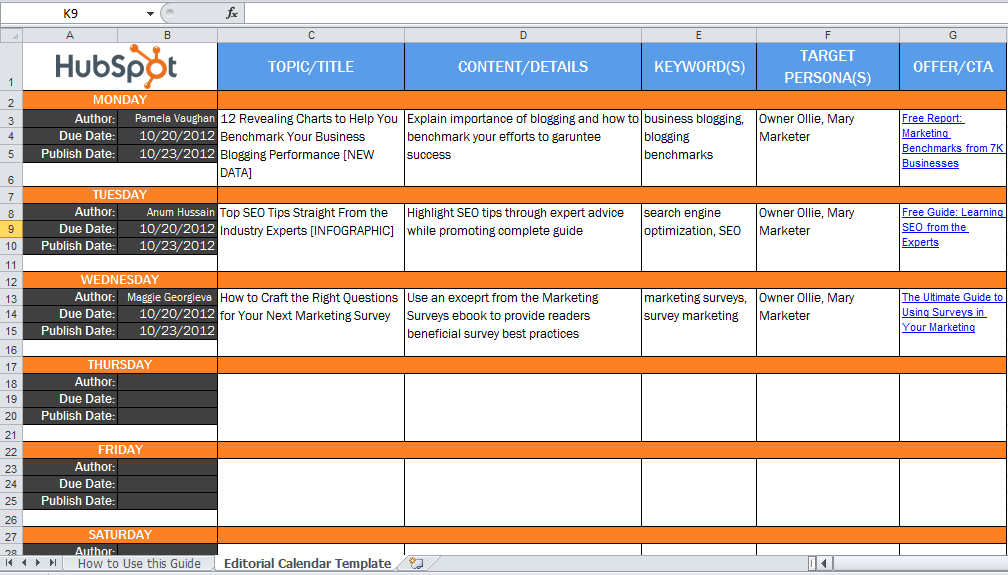
Content Creation and Publishing
For starters, blogging is the best way to increase website traffic and attract the attention of the right visitors.
You can do this by conducting keyword research and then creating an editorial calendar or content strategy based on those keywords and target audiences.
As we’ve already discussed the process of defining your target audience, the secret to winning at inbound marketing is to create content around your buyer personas’ pain points and the latest developments in your industry.
Here are 3 reasons why your company should start blogging consistently:
- Your company will be known as an expert in the industry due to the amount of content you’re publishing;
- Websites with a blog have tend to have 434% more indexed pages (source).
Indexed pages are basically the number of pages that are visited by Google; - Active company blogs generate 67% more leads than websites without blogs. (Source HubSpot)
The more pages your website has, the better chances of it to rank higher in search results (provided that your blog topics follow a strategic content calendar)

Pay-Per-Click (PPC) Campaigns
Although inbound marketing is mainly about creating content and optimizing your website for converting visitors into leads, Pay-per-click services such as Google Adwords are an excellent weapon in your marketing armory.
By running PPC campaigns, you get a chance to show your content to people who are searching for your keywords and may be interested in your company.
Google Adwords is the most common PPC tactic, so make sure to utilize its full potential.
Social Media Marketing
Most of your target audiences are on social media.
In fact, everyone is active on at least one platform, whether it’s Facebook, LinkedIn, Twitter, Instagram or Google+.
That assumption also depends on how well your know your target audience and what’s their preferred social platform.
According to a recent social media research, 9.38 million people in the UAE are active social media users (out of the total population of 9.45 million).
With these staggering numbers, it’s a lost opportunity if you don’t leverage social media channels in the UAE to share your content.
To put this advice into action, share your blogs, ebooks, videos, infographics and other types of content on social media and run ads among highly targeted audience segments.
The art of running social media campaigns to generate leads is given in my guide here.
Email Marketing
Most people think email marketing is dead.
But that's a load of crap.
The reality is:
“Email marketing is the king of the marketing kingdom with a 3800% ROI and $38 for every $1 spent.”
I’m not going around preaching the effectiveness of email marketing in my own words.
The statement above was, in fact, released by Campaign Monitor who swear by email marketing campaigns as their bread & butter.
If that statistic wasn’t convincing enough, I’ll throw another one at you by McKinsey – one of trusted advisors to the world’s most influential businesses & institutions.
Here’s what their research suggests:
“Email marketing is 40 times more effective at acquiring new customers than Twitter and Facebook combined.”
Truth be told, email marketing is still the leader of communications with clients and prospective customers.
You can build relationships, create brand awareness and boost social interaction, all through email marketing campaigns.
Although email marketing is a rather inexpensive marketing medium, the secret sauce lies in sending relevant emails to a segmented list of contacts.
Blasting generic emails to your entire database will not only give you poor results and terrible Click-through-rates but also rob you of your valuable subscribers who may lose trust in you.
So adopt email marketing to nurture your leads and move them through the sales funnel, converting them from interested prospects into converted clients, all the way until delightful customers and brand ambassadors.
Again, all this can be automated using a marketing automation tool like Hubspot and others.
You can send out content updates to subscribers, monthly newsletters, premium content offers and nurturing emails to your segmented database to maximise the effectiveness of emailers.
Premium Content Production
People have become immune to mediocre content.
They can instantly make out if your website is worth their time or just stuffed with generic, fluffy blog posts that are devoid of any strategy or research.
That’s why premium content is the real deal.
It has the power to converts visitors into leads when they arrive on your website.
If you regularly create awesome content that your buyer personas love, you’ve almost won the game.
Premium content makes visitors eager to send you their contact details to access your downloadables such as ebooks, reports etc.
Don’t worry about having to blog exhaustively to please your buyer personas.
Here are 15 other types of content you can create apart from just blogging endlessly.
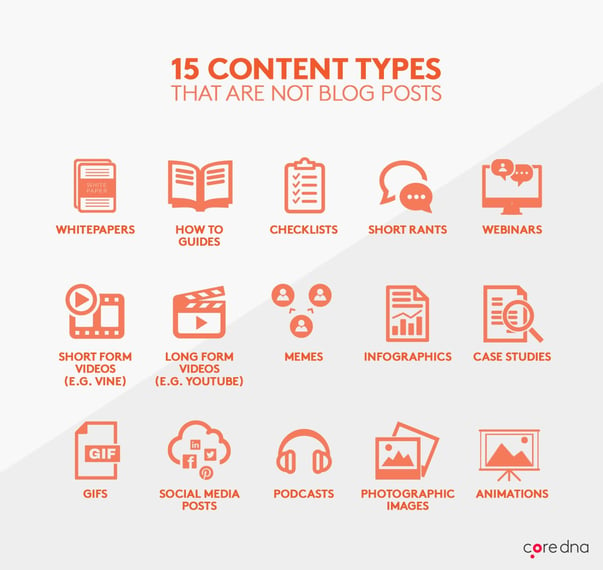
Landing Page Design
Premium content looks even better on good-looking landing pages.
Just FYI, landing pages are web pages that your visitors “land” on ;)
To collect data from potential clients, you should create landing pages that are relevant to the free downloadables you’re offering.
This is an industry-wide best practice and helps reinforce the trust of your visitors.
Here’s a skeleton of a good landing page.

Great landing pages are eye-catching, skillfully designed, persuasively written and succeed at collecting leads.
You should specify the action you want your visitors to take when they arrive on your landing page.
This helps in creating a workflow for them that guides them until the objective is met.
Call-to-Action Creation
A call-to-action (CTA) can is perhaps the most important section of your content.
If it isn’t persuasive enough, you’ll lose the opportunity to collect the contact details of potential leads.
That’s because, CTAs direct visitors to your premium content landing pages where they can download freebies in exchange for contact information.
Your CTAs shouldn’t look gimmicky or shady, and should instead be designed with care.
Think of them as your website’s billboards that exist to direct visitors to further steps in your sales funnel.
Just like how I shared the skeleton of a decent landing page, here’s what an ideal CTA consists of:

If your CTA looks boring and uninviting, even your superstar blog post can fail to collect lead data.
So make sure to brief your graphic designer well enough to create a compelling call to action.
Thank you page:
The ‘Thank You’ page is usually the last web page a lead sees while downloading his/her content offer.
Although it can look similar to your landing page, the Thank You page exists to deliver the content that the lead has filled up the form for.
It’s a great space to delight your leads on the Thank You page by adding a bottom-of-the funnel offer or further suggestions.
Your Thank You page should ideally do the following:
- Deliver the offer (ebook, webinar, report, etc)
- Provide your visitors with direction
- Move them into the sales process
- Follow up with an email
- Include links to social networks: Facebook, Twitter, Instagram, LinkedIn, Additional Blogs, etc.
Include website navigation so they can click back to your site if they want to
In other words, make them feel thanked for when they arrive at that page.
Step 4: Acquiring Customers
Alignment of Sales and Marketing
Inbound Marketing is rather incomplete without a robust CRM system to execute and overlook all your marketing efforts.
With CRM systems you can track every action your lead undertakes, such as the pages viewed on your website, reactions towards your email marketing campaigns and engagement with your social media posts.
This kind of information puts your sales team one step ahead on sales call.
By being equipped with data of this degree, they can prepare themselves for further meetings more efficiently, since they now understand the lead’s situation better.
Lead Lifecycle Plan
A name, email address and mobile number isn’t enough to understand your potential clients.
That’s why you should deploy what’s called a lead lifecycle plan.
This lifecycle plan is based on your website content and sales funnel and takes into account the amount of interaction leads have had with your business.
By deploying a lead lifecycle plan, you can plan the type of content you want them to receive, and at what part of the sales funnel you want them to receive it.
Lead Nurturing
As the name suggests, you can move leads within your sales funnel by running lead nurturing campaigns using emails.
The best way to do this is through automated “workflows” which enable you to trigger a follow-up email or a series of emails based on the actions you leads may take.
Since you’re being the guiding light for your leads, you can nurture and educate them until they’re prompted to take the next steps before eventually being handed over to a sales professional.
Automated Workflows
As mentioned above, workflows make your marketing easier by automating certain common and laborious tasks, such as moving leads through your funnel, nurturing them and so on.
You can do way more with these “automated worflows” with actions like changing contact properties, and sending notification emails to your team.
They’re as close to having an affordable robot handle the task-heavy parts of marketing.
Closed-Loop Reporting
By defintion, Closed loop reporting (CLR) is a system in which data and information collected by marketing and sales professionals is made available to both teams.
With this, your sales team gets the opportunity to report on qualified leads they’ve received after your marketing team has nurtured them.
This simple illustration describes the basics of closed-loop reporting with ease.

This form of reporting helps you understand the efficiency of your lead sources as well as the overall health of your inbound marketing campaigns.
Step 5: Retaining Customers
Good businesses close customers and hold their end of the bargain.
Great companies focus on turning customers into promoters and loyal fans.
This comes back to the effectiveness of word-of-mouth marketing and its prevalence in the UAE.
To retain customers and delight them, consider starting referral programs, educating them with high-quality content pieces and segmenting them separately when it comes to sending exclusive newsletters to existing customers.
Here’s a little more about each tactic:
Customer Referral Programs
A lead that’s referred by an existing customer has way more chances to convert as compared to one that ventures into your website.
If applicable to your business, you should create customer referral programs to reward your existing clients upon promoting your business and generating leads.
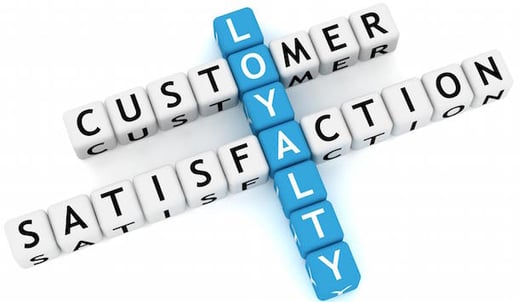
High Quality Educational Content
With inbound marketing, you can segment your customers into lists based on their needs and buyer personas.
And with the help of automated workflows, you can send them additional information they might need, being existing customers.
You could identify opportunities to send them content that might be important to them or even up-sell certain products or services to mutually benefit both parties.
Segmented Customer Newsletters
Don’t treat newsletters as customary emails to remind customers of your presence by regularly popping up in their inbox.
You should in fact segment your contact database and send segmented customer newsletters so they continue to hear from you even after they’ve purchased your goods and services.
This shows that you still care about them and their well-being, and consider them as part of your family.
Step 6: Account Analysis
Marketing Benchmarks
Running an inbound campaign, collecting leads and dusting your hands off isn’t enough.
You should analyze your marketing data based on the KPIs you’ve set.
These marketing metrics include customer acquisition cost (CAC) and ratio of customer value to CAC which is the total value that your company derives from each customer compared with what you spend to acquire that new customer.
Here are 10 marketing metrics you must always measure.
Once you’ve analyzed this data, you must find ways of reducing the cost of acquiring new customers to increase profitability and use that budget for something equally important.
On-site Analysis
Your website isn’t going to optimize itself automatically.
You’ll need to regularly monitor it for keeping your inbound marketing campaigns in top health.
Start by looking at keyword performance and rankings, organic search traffic and conversions, number of leads generated, bounce rates, average reading time of blogs, click through rates, 404 errors and so on.
By consistently keeping an eye on these website metrics, you can reduce the margin for errors and redundant pages.
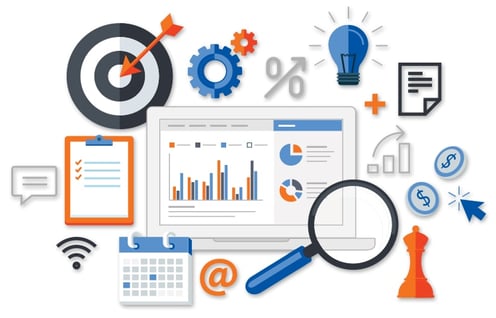
Off-site Analysis
No body said running an inbound marketing campaign was going to be easy.
The best results come from observing data and tweaking your strategy accordingly.
Although you’ve conducted an on-site analysis, you must not refrain from its off-site counterpart.
This essentially consists of analyzing your PPC campaigns, organic and paid social media posts, engagement levels, and everything else that happens outside your website.
Monthly Reporting
To keep your sanity intact, you should maintain a monthly reporting structure that allows you to measure your business goals with the current campaigns.
Most CRM softwares give you the option of extracting weekly, monthly and yearly reports to understand the direction of your business’ growth.
Based on the data you uncover, you can gauge the effectiveness of your content offers, landing pages, CTAs and Thank You pages to tweak them accordingly.
5) Inbound Marketing vs Content Marketing: What makes them different and what unites them.
Until this point, I’ve used the word “content” 66 times in the article, so you might be wondering the difference between content marketing and inbound marketing.
It’s natural to feel slightly unbiased to both terms, especially because inbound uses content to function.
But there a few differentiators I believe you should know about, so here’s a quick rundown on what’s content marketing vs inbound marketing, followed by a link to a complete article on that topic:
Content marketing involves creating and distributing content across multiple channels—for example, writing an ebook, sharing it on social media, and ensuring that it is read and shared by those who will find it applicable.
Inbound marketing, however, focuses on everything before and after content marketing.
For example, building a website, adding that piece of content on it, designing an attractive enough call to action, and ensuring follow-up communication to convert a lead into a sale.
That’s inbound marketing explained in a sentence.
In fact, it wouldn’t be wrong to say that content marketing is part of an inbound marketing strategy.
Inbound marketing is the machine that transforms content into something that benefits the business, not just the customer.
Content marketing is just one part of inbound, simply because of the scope of work involved.
6) Sample Application of Inbound Marketing: Increasing School Admissions using Content & Context
At the beginning of this article, I promised to demonstrate the working of inbound marketing in a diverse country like UAE where thousands of brands are fighting for attention in a crowded marketplace.
So, here’s an example of using inbound marketing to increase admissions for schools - something that might surprise you, especially if you’ve been thinking that inbound mostly applies to B2B and “boring” industries.
The link to my complete article is given below.
Make sure to read it well, as you’ll find examples of keyword research and some strategy pointers to guide your inbound marketing efforts.
Conclusion:
Inbound Marketing, as you must’ve observed by now, is a continuous exercise that doesn’t come to a halt.
When you create content such as blogs, videos, podcasts or infographics, it doesn’t just disappear into the realm of endless marketing messages.
If produced with care and treated well, your content will age like fine wine, ranking higher on search engines and getting the attention it deserves.
Take the example of Hubspot, who tripled its monthly leads by optimizing old blogs and updating the information within them.
This exercise also increased their organic traffic by 106%. Read more about it here.
In other words, you’re starting with a post that already has some degree of page authority, rather than starting completely from scratch.
By re-promoting your updated blog posts, you’ll benefit from new visitors and leads who weren’t familiar with your content earlier.
Running an inbound marketing campaign requires the expertise of a specialized team.
Skills like marketing strategy, copywriting, designing, proof-reading, social media marketing, search engine optimization are going to be very handy to run a successful inbound marketing campaign in a market like UAE.
If you have the in-house capability to execute profitable inbound marketing campaigns, great!
Otherwise, you can simply get in touch with us to run it from scratch.
Since we’re a Dubai-based inbound marketing agency, with a team of in-house specialists, you’ll be able to benefit from our market knowledge and inbound expertise.
I hope you enjoyed reading this, as much as I enjoyed writing it.




